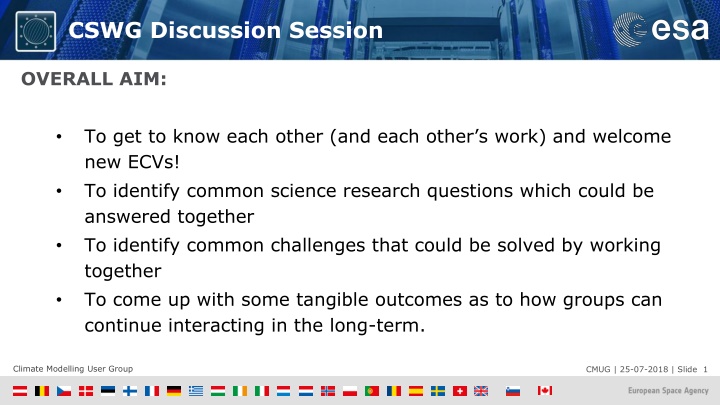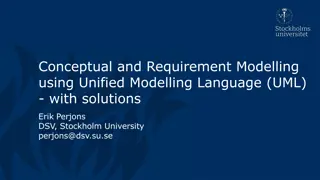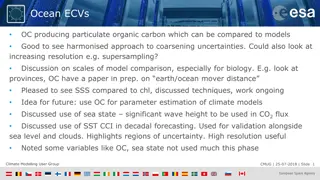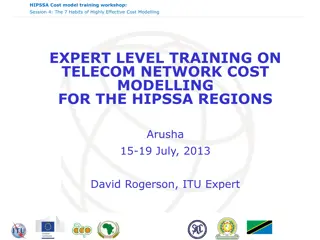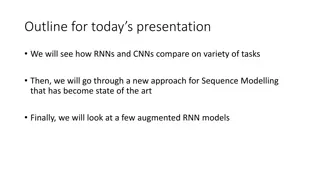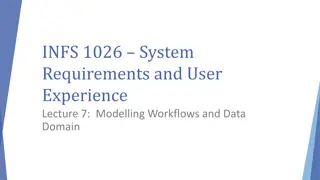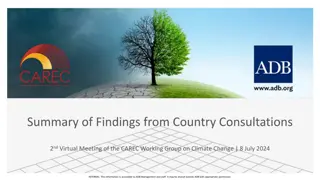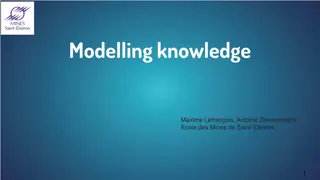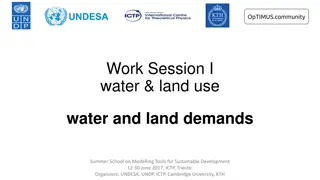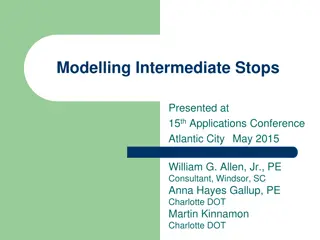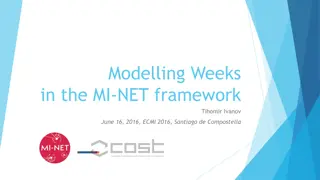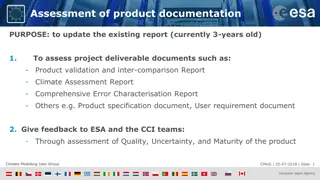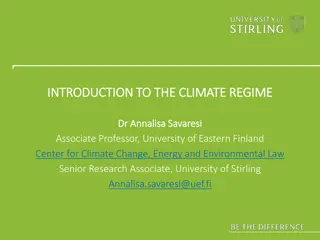Climate Modelling User Group Discussion Session Overview
The Climate Modelling User Group (CMUG) discussion session aims to foster collaboration among members, welcome new participants, identify common research questions and challenges, and establish long-term interaction mechanisms. The session includes presentations on ECV consistency and planetary visions, interactive exercises like Team Bingo and ECV interactions, and group discussions for feedback and future steps.
Download Presentation

Please find below an Image/Link to download the presentation.
The content on the website is provided AS IS for your information and personal use only. It may not be sold, licensed, or shared on other websites without obtaining consent from the author.If you encounter any issues during the download, it is possible that the publisher has removed the file from their server.
You are allowed to download the files provided on this website for personal or commercial use, subject to the condition that they are used lawfully. All files are the property of their respective owners.
The content on the website is provided AS IS for your information and personal use only. It may not be sold, licensed, or shared on other websites without obtaining consent from the author.
E N D
Presentation Transcript
CSWG Discussion Session OVERALL AIM: To get to know each other (and each other s work) and welcome new ECVs! To identify common science research questions which could be answered together To identify common challenges that could be solved by working together To come up with some tangible outcomes as to how groups can continue interacting in the long-term. Climate Modelling User Group CMUG | 25-07-2018 | Slide 1
CSWG discussion session, Wed. 6th Introduction (Kate Salmon, CMUG) 1630 1635-1655 Thomas Popp to present on ECV consistency 1700-1715 Philip Eales to present on Planetary Visions , including discussion 1715-1730 Icebreaker exercise (Team Bingo) 1730-1800 ECV interactions exercise Climate Modelling User Group CMUG | 25-07-2018 | Slide 2
CSWG discussion session, Thurs 7th Welcome and overview (Kate Salmon, CMUG) 0930 0940-1030 Discussion in groups 1030-1100 Feedback and next steps Climate Modelling User Group CMUG | 25-07-2018 | Slide 3
Thomas Popp Climate Modelling User Group CMUG | 25-07-2018 | Slide 4
Philip Eales Climate Modelling User Group CMUG | 25-07-2018 | Slide 5
CSWG Bingo! For each statement in the Bingo Sheet, find a person in the room who this applies to and write their name in the box. Each person can fill in a maximum of two boxes on each row/ column of your sheet, and no more than three boxes on the entire sheet. The first goal is to get Bingo: a completed row or column. When you do, yell BINGO! Then, try to fill in the entire card for a Full House. The person with the most number of squares filled out will win a CMUG cup Climate Modelling User Group CMUG | 25-07-2018 | Slide 6
ECV Interactions Exercise How does your ECV contribute to the fundamental understanding of the climate system? 1. Select a post-it note colour based on which part of the climate system your ECV is a part of e.g. land cover= Green post-it, GHG = Red post-it (Post-it note colours: Green = Land, Blue = Ocean, Red = atmosphere, Yellow = cryosphere) 2. Write your ECV on the top of the post it note. 3. Write on the post-it note what aspect of the climate system your ECV contributes to, and how? and stick on the climate system schematic poster in the appropriate place e.g. ENSO (atmosphere post-it note in the sky) e.g. carbon cycling (green post-it note on land). 4. Discussion groups will emerge from this process. Climate Modelling User Group CMUG | 25-07-2018 | Slide 7
CSWG discussion session, Thurs 7th Start populating the climate schematic As soon as you arrive ECV interaction exercise 0930-45 0945-1030 Discussion groups 1030-1100 Feedback Climate Modelling User Group CMUG | 25-07-2018 | Slide 8
ECV Interactions Exercise How does your ECV contribute to the fundamental understanding of the climate system? 1. Select a post-it note colour based on which part of the climate system your ECV is a part of e.g. land cover= Green post-it, GHG = Red post-it (Post-it note colours: Green = Land, Blue = Ocean, Red = atmosphere, Yellow = cryosphere) 2. Write your ECV on the top of the post it note. 3. Write on the post-it note what aspect of the climate system your ECV contributes to, and how? and stick on the climate system schematic poster in the appropriate place e.g. ENSO (atmosphere post-it note in the sky) e.g. carbon cycling (green post-it note on land). 4. Discussion groups will emerge from this process. Climate Modelling User Group CMUG | 25-07-2018 | Slide 9
Discussion Questions- what? 1.What research questions could be answered by working with other ECVs? 1.When bringing together multiple datasets, what challenges do you face and how would you overcome these? Climate Modelling User Group CMUG | 25-07-2018 | Slide 10
Discussion Questions- How? 3. Which of these questions are we going to answer and how? 4. Are the interactions between your ECV sufficient? Do they need to be improved and what tools could help communication and collaboration? Climate Modelling User Group CMUG | 25-07-2018 | Slide 11
What research questions could be answered by working with other ECVs? Group 1 (Ulrika): scientific. ENSO/NAO- use variables. Need to use together, improve parametrisations (Use diffrent ECVs, attribution e.g. carbon cycle), uncertainty modelling, during one ECV to contstrain another during retrieval e.g. SST could constrain water vapour. Group 2 (Pablo): Group 3 (J-C): Climate Modelling User Group CMUG | 25-07-2018 | Slide 12
When bringing together multiple datasets, what challenges do you face and how would you overcome these? Climate Modelling User Group CMUG | 25-07-2018 | Slide 13
Which of these questions are we going to answer and how? Climate Modelling User Group CMUG | 25-07-2018 | Slide 14
Are the interactions between your ECV sufficient? Do they need to be improved and what tools could help communication and collaboration? Climate Modelling User Group CMUG | 25-07-2018 | Slide 15
